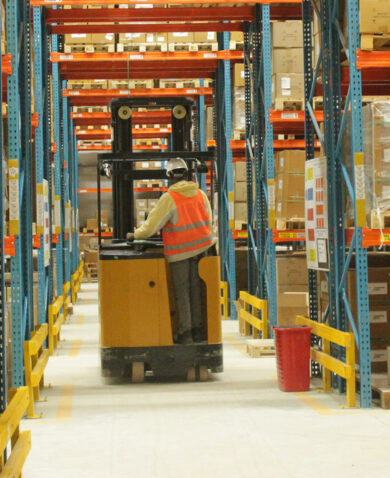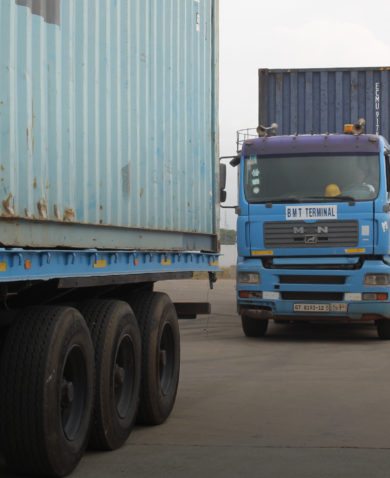
The Upsides and Downsides of Increasing Regional Manufacturing
January 29, 2024 | 4 Minute ReadThe COVID-19 pandemic highlighted inequalities in access to supply chains, which has led to heightened focus on the capacity of African nations to increase regional manufacturing.
The COVID-19 pandemic catapulted supply chain management and resilience into the spotlight as never before. We all learned first-hand how global supply chains, which focus on efficiency and cost control, were vulnerable to supply-side (COVID-19 control measures, such as trade and travel restrictions) and demand-side (panic buying) disruptions. Sadly, and perhaps predictably, countries with the financial means to control supply chains won the scramble to secure critical COVID- and non-COVID-related products at a time of global shortages, with many African nations left at the back of the queue. In response, these countries are now accelerating their efforts towards greater regionalization of manufacturing activity for critical health products to ensure their place at the front of the line.
Key players such as PEPFAR and the Africa Centers for Disease Control and Prevention have set ambitious goals for increasing regional manufacturing of health commodities and vaccines. Chemonics, through the USAID Global Health Supply Chain-Procurement and Supply Management (GHSC-PSM) project, is one of the organizations supporting local efforts to meet these goals.
In theory, having a larger manufacturing base in Africa guarantees access to products on the continent during future disruptions. But is this reasoning sound? Are these countries ready for this huge shift? What are the important challenges in realizing the vision of regionalization? And, in the event of success, what challenges may emerge as unintended consequences that we should start to prepare for now?
Let’s start by looking at what challenges need to be addressed to bring this agenda to life. Regionalization is a broad topic touching many policy areas – two are of particular importance:
- Reducing regulatory and trade barriers: The lack of regulatory harmonization across the continent and cross-border trade restrictions create barriers to entry and put African manufacturers at a disadvantage. Initiatives such as the African Medicines Agency, which has now been ratified in 26 countries, and the Southern African Development Community’s ZaZiBoNa initiative can help create an enabling environment for local production and catalyze manufacturing activity by providing more streamlined access to individual country markets. Additionally, trade facilitation initiatives, such as the African Continental Free Trade Agreement (ACFTA), reduce the cost and time of moving goods between countries and create opportunities for manufacturers to access larger markets within the continent.
- Using procurement levers: Many African countries lack the purchasing power of larger economies. Pooled procurement schemes can encourage new manufacturing entrants in African markets by providing access to demand across several countries through one mechanism. It can also achieve some cost savings for the buyers in the “pool” through the economies of scale in longer manufacturing runs and the reduced costs of tendering. However, some existing procurement levers, such as price preferences for local manufacturers, will offset some of these gains. Of course, beyond government procurement spend, donors remain a key funding source for public health commodities on the continent; aligning donor procurement policy with regionalization initiatives can help ensure that African manufacturers are eligible to compete for huge donor investments being spent globally on health products for programs in Africa. As things stand, USAID’s policy on this subject has focused on targets for procurement of HIV rapid test kits and antiretrovirals from African manufacturers by 2025 and 2030 respectively. Experience over the next few years will help to evaluate and refine that policy based on the actual effect in the markets.
All of the above requires unprecedented levels of cooperation and alignment across multiple countries and institutions in Africa. But, as we can see from some of the initiatives underway, progress is encouraging. If these initiatives continue, and African countries can work out how to specialize their manufacturing strategies for mutual benefit, we could see significant growth in manufacturing activity in the region within the next 10 years.
If we do see progress toward regional manufacturing goals, what could be the potential side effects of success? There are several trade-offs that need to be considered and planned for:
- Price increases: Increasing supply chain resilience through greater local manufacturing activity is likely to come with a cost in the short to medium term. Logistics costs and customs duties within Africa are substantially higher than between India or China and Africa. The ACFTA is aiming to address some of the issues, but policy changes across multiple countries will take time. What we do not yet know is to what extent the global community is willing to sacrifice coverage (simply defined as the percentage of recipients in need that are able to receive products) in pursuit of regionalization objectives. Countries will need to find ways to justify short-term price increases to citizens – and donors – in pursuit of increased resilience and sustainable economic growth.
- Net resilience gain: The main expected benefit driving the push toward regional manufacturing is increased resilience through positioning commodities closer to the end user to fend against disruptions. Yet, diversity of supply is a risk mitigation tactic in itself that may decrease if buyer emphasis on regional manufacturing leads to non-African suppliers being pushed out of the market, leaving fewer alternatives in the event of a supply disruption. Additionally, focusing only on manufacturing finished products locally while other manufacturing activity further up the supply chain continues to take place in other parts of the world will not necessarily build resilience against global disruptions.
So is it worth it? Success will depend on how the regionalization concept is sold in the first place, because that is how it will be evaluated. Issues of price need to be addressed up front. Strategies should cover entire product supply chains, including active pharmaceutical ingredients, to ensure that African countries gets their fair share of drugs and supplies during future global shocks. And, crucially, discussions on quality standards need to be addressed as part of regulatory harmonization. Achieving expensive international standards is only financially viable for a supplier if the bar is the same for all its competitors.
Banner image caption: Amos Mwangi, a warehouse employee in Kenya, packs medicine into a carton that will be delivered to a health facility. Image supplied by the USAID Kenya Pharma program.
Posts on the blog represent the views of the authors and do not necessarily represent the views of Chemonics.

























